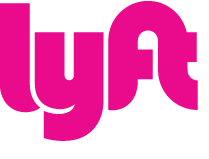
One of the largest ride-hailing services providers, Lyft, Inc. (LYFT), reported grim fiscal 2022 third-quarter results. Though the company beat analysts' EPS estimates, its net income and EPS were all in losses, and its total cost and expenses saw a sharp increase.
Moreover, early in November, the company said it would lay off 13% of its staff, nearly 700 employees, as it rethinks staffing amid rising inflation and fears of a looming recession.
LYFT and Motional, a driverless technology firm, said in November that residents in Los Angeles will be able to book robotaxis on the ride-hailing company's app. However, they still need to specify when the service will be available. Amid tough regulatory scrutiny and delayed commercial adoption of autonomous vehicle technology, uncertainty remains.
Shares of LYFT have declined 75.2% over the past year and 39.3% over the past six months, closing its last trading session at $10.41.
Here is what could shape LYFT’s performance in the near term:
Mixed Financials
LYFT’s revenues increased 21.9% year-over-year to $1.05 billion in its fiscal third quarter ended September 30, 2022.
However, its total cost and expenses grew 25.7% from its prior-year quarter to $1.34 billion. The company’s loss from operations rose 41.6% year-over-year to $290.38 million. Its net loss and loss per share came in at $ 422.20 million and $1.18, increasing 323.4% and 293.3%, respectively, from the same quarter last year.
Premium Valuation
In terms of forward non-GAAP P/E, LYFT is currently trading at 25.41x, which is 51% higher than the 16.83x industry average. Its forward EV/EBITDA multiple of 11.06 is 3.9% higher than the 10.65 industry average, while its forward EV/EBIT multiple of 18.93x is 25.1% higher than the industry average of 15.13x.
Also, the stock’s forward Price/Book ratio of 4.43 is 70.9% higher than the industry average of 2.59.
Poor Profitability
LYFT’s trailing-12-month EBITDA margin of negative 24.52% and negative EBIT margin of 27.86% compare to the industry average of 13.03% and 9.73%, respectively. Its net income margin of negative 31.54% compares to the industry average of 6.75%.
Additionally, its trailing-12-month ROCE, ROTC, and ROTA of negative 109.07%, 30.95%, and 26.67% compare to their respective industry averages of 14.16%, 6.81%, and 5.35%.
Unfavorable POWR Ratings
LYFT's overall D rating translates to Sell in our proprietary POWR Ratings system. The POWR Ratings are calculated by considering 118 distinct factors, with each factor weighted to an optimal degree.
Our proprietary rating system also evaluates each stock based on eight distinct categories. LYFT has a Stability grade of D, consistent with its 24-month beta of 1.35. It is rated C in Growth, in sync with its poor financials.
Among the 77 stocks in the C-rated Technology – Services industry, LYFT is ranked #56.
Click here to view LYFT ratings for Value, Momentum, Sentiment, and Quality.
Bottom Line
LYFT's premium valuation does not justify its fundamentals. Moreover, given its lower-than-industry profitability and a downward price rally over the past year, the stock might be best avoided now.
How Does Lyft (LYFT) Stack up Against Its Peers?
While LYFT has a D rating in our proprietary rating system, one might want to consider looking at its industry peers, Jabil Inc. (JBL), Celestica, Inc. (CLS), and Leidos Holdings Inc. (LDOS), which have an A (Strong Buy) rating.
LYFT shares were trading at $10.19 per share on Wednesday afternoon, down $0.22 (-2.11%). Year-to-date, LYFT has declined -76.15%, versus a -16.29% rise in the benchmark S&P 500 index during the same period.
About the Author: Kritika Sarmah

Her interest in risky instruments and passion for writing made Kritika an analyst and financial journalist. She earned her bachelor's degree in commerce and is currently pursuing the CFA program. With her fundamental approach, she aims to help investors identify untapped investment opportunities.
Is Lyft a Stock You'll Want to Hop Into This Winter? StockNews.com






